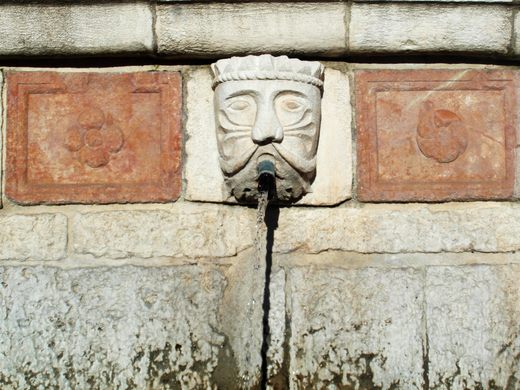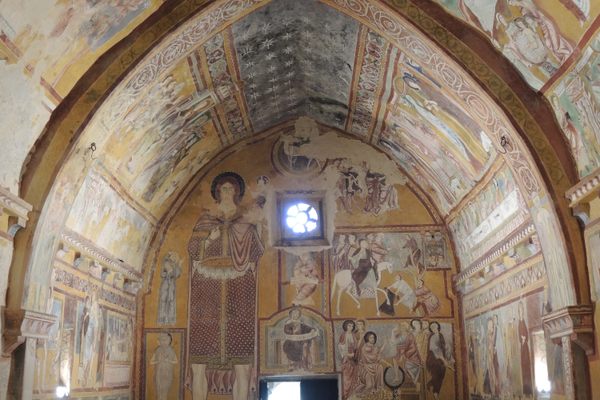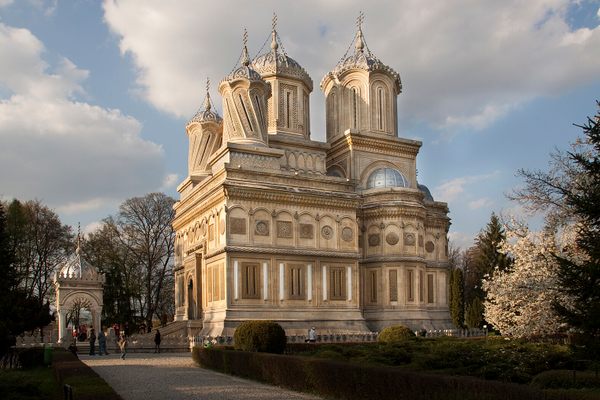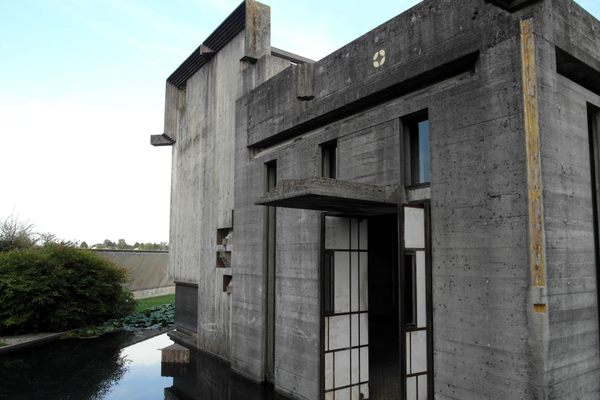Fountain of 99 Spouts
A medieval fountain lined with 99 unique stone faces whose origins and meaning remain unknown.
The Fountain of 99 Spouts (Fontana delle 99 Cannelle), an icon in the city of L’Aquila, is one of the most impressive and unique monuments in the southern Italian region of Abruzzo. Built in the 13th century, it is shrouded in legend, and the true meaning of its 99 sculpted stone faces is still a mystery.
The prevailing legend is that this unique piece of civil architecture represents the “99” castles from the surrounding counties (there were actually far fewer, closer to 70) that joined together to found the city of L’Aquila in the late-medieval era. In reality, though, this origin legend was likely attached to the monument after it was built, in 1272 according to the inscription.
The fountain is laid out in a trapezoidal shape with three inward-facing pools overlapped by horizontal rows of 93 (not 99) water-spouting maskerons. (Another six spouts were added later, jutting out from a stone near the fountain entrance.) The overlapping rows of alternated red and white stones creates the optical illusion of distorting and bending horizontal lines. Each makseron is masterfully sculpted and each with a different face. While their exact allegoric meaning is still debated, it is widely accepted that they could be caricatural representations of real existing, influential people of the time: monks, priests, knights, but also pagan figures such as satyrs, demons, animal-human hybrids.
In fact no one is sure of the origins of the fountain, whose faces they represent, or what their positioning and number may symbolize (if anything). It’s inspired years of speculation, of course, with plenty of rumors swirling that the enigmatic fountain may be linked to the famous Knights Templar.
Plan Your Trip
The Atlas Obscura Podcast is Back!
























Follow us on Twitter to get the latest on the world's hidden wonders.
Like us on Facebook to get the latest on the world's hidden wonders.
Follow us on Twitter Like us on Facebook